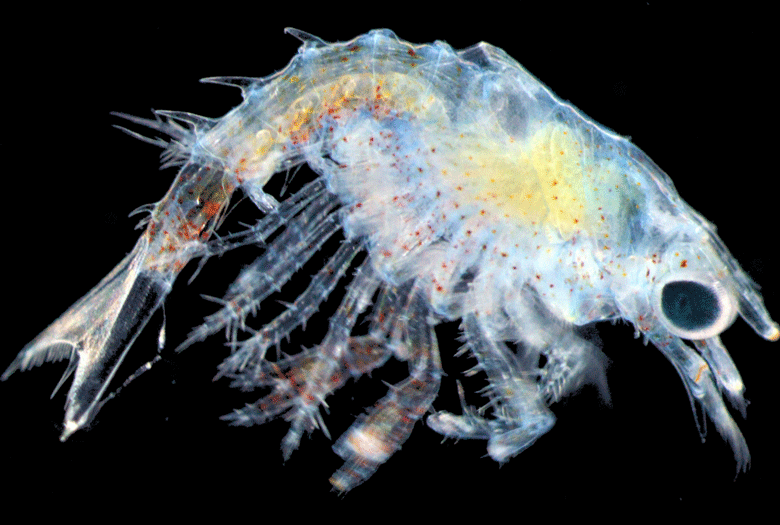There is a crustacean conundrum in the Gulf of Maine. Despite increased numbers of lobsters being born in recent years, the number of adolescents has declined. Something is affecting the survival rates of lobsters in their first few weeks of life, and researchers from Bigelow Laboratory for Ocean Sciences and the University of Maine think it may have to do with how they eat.
“Baby lobsters undergo such incredible changes during their first month,” said Evie Layland, one of several UMaine graduate students investigating the decline under the guidance of Bigelow Laboratory scientists. “They also face a lot of challenges. They have to avoid predators, search for food that may not be as plentiful as it used to be, and respond to changing environmental conditions. The little dudes just have a lot on their plates.”
There has been a steady increase in the number of adult lobsters in the Gulf of Maine over the last few decades. This has led to a record number of baby lobsters swimming in the water during their larval stages. Paradoxically, however, the number of juvenile lobsters that settle to the bottom of the ocean has decreased during the same time period.
Research has already revealed that some lobster larvae show signs of starvation in their earliest stages…
One possible reason is that warming conditions in the Gulf of Maine are changing their food. Scientists have observed that a decline in a common prey species called Calanus finmarchicus strongly correlates with the decline of juvenile lobsters and think the two may be related. However, despite how iconic the North American lobster is to the region, the diet of young lobsters remains a mystery.
Alex Ascher, another UMaine graduate student working at Bigelow Lab, is trying to answer this question. After dissecting their stomachs, he uses DNA evidence and keen eyes to figure out what’s inside.
“Calanus is considered a foundational species in the Gulf of Maine, and in the North Atlantic in general,” Ascher said. “It’s at the base of many food webs and really energy rich. Changes to its population, and the populations of other food sources, could help us understand what’s going on with lobsters.”
This February, both Layland and Ascher presented their research at the international Ocean Sciences Meeting held by the Association for the Sciences of Limnology and Oceanography.
Ascher’s research has already revealed that some lobster larvae show signs of starvation in their earliest stages, but there are less of these signals in older lobsters. This could mean that whatever food the youngest lobsters are eating is limited.
Lobsters are small, slow, and hardly recognizable as lobsters during their youngest stages. No larger than a ladybug, they can’t move fast enough to eat anything with even a reasonable ability to escape. At these stages, Layland provides them with animals called brine shrimp as part of her research into their feeding habits. The shrimp are not a natural food source in the Gulf of Maine, but they are a good analog to study how lobsters eat.
“They are basically just kind of floating doughnuts for lobster larvae,” Layland said. “They’re really easy for the baby lobsters to just snatch out of the water and eat.”
Layland has recorded different stages of larval lobsters on video to watch them feed, and she has discovered a wide discrepancy in their abilities. Early stages take about seven minutes to eat one brine shrimp. Around a month after they are born, lobsters get to a post-larval stage. They can move faster and have fully developed claws—and the game has changed.
“They’re just gobbling brine shrimp down in less than a second,” she said. “They’re popping them in their mouths left and right, and you can’t even really measure how fast they’re doing it with some of their other food.”
The time it takes to eat makes a difference for them in the wild. When a lobster larva commits to something larger than a brine shrimp, like a Calanus, it can take almost an hour to eat it. That’s 60 minutes of time focused on food, which puts them at higher risk for getting eaten themselves.
Larval lobsters in the water today will be of marketable size in approximately seven years. Better understanding the challenges they’ll face along the way can help people prepare for the changes already affecting the environment.
“If we know what goes into producing a successful larva, then we have a crystal ball into the future and to what the lobster population will be doing,” Ascher said. “If we understand what they’re eating and what is available for them to eat, it gives us a way to look seven years into the future. If we know there’s going to be less lobsters entering the fishery, it can be really helpful for management.”
Fritz Freudenberger is science communications manager for Bigelow Laboratory for Ocean Sciences in East Boothbay. This story first appeared on Bigelow’s website and is reprinted by permission.





